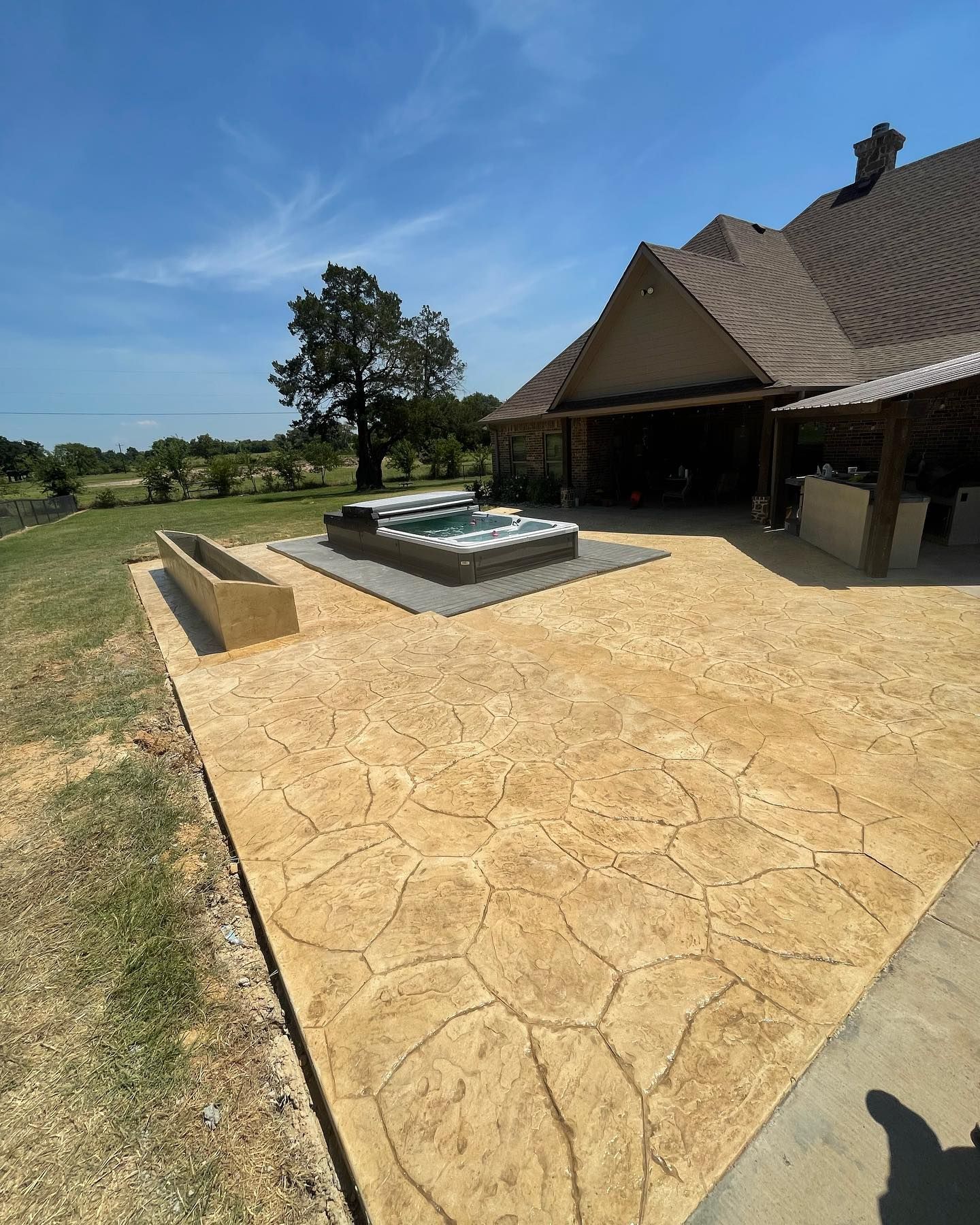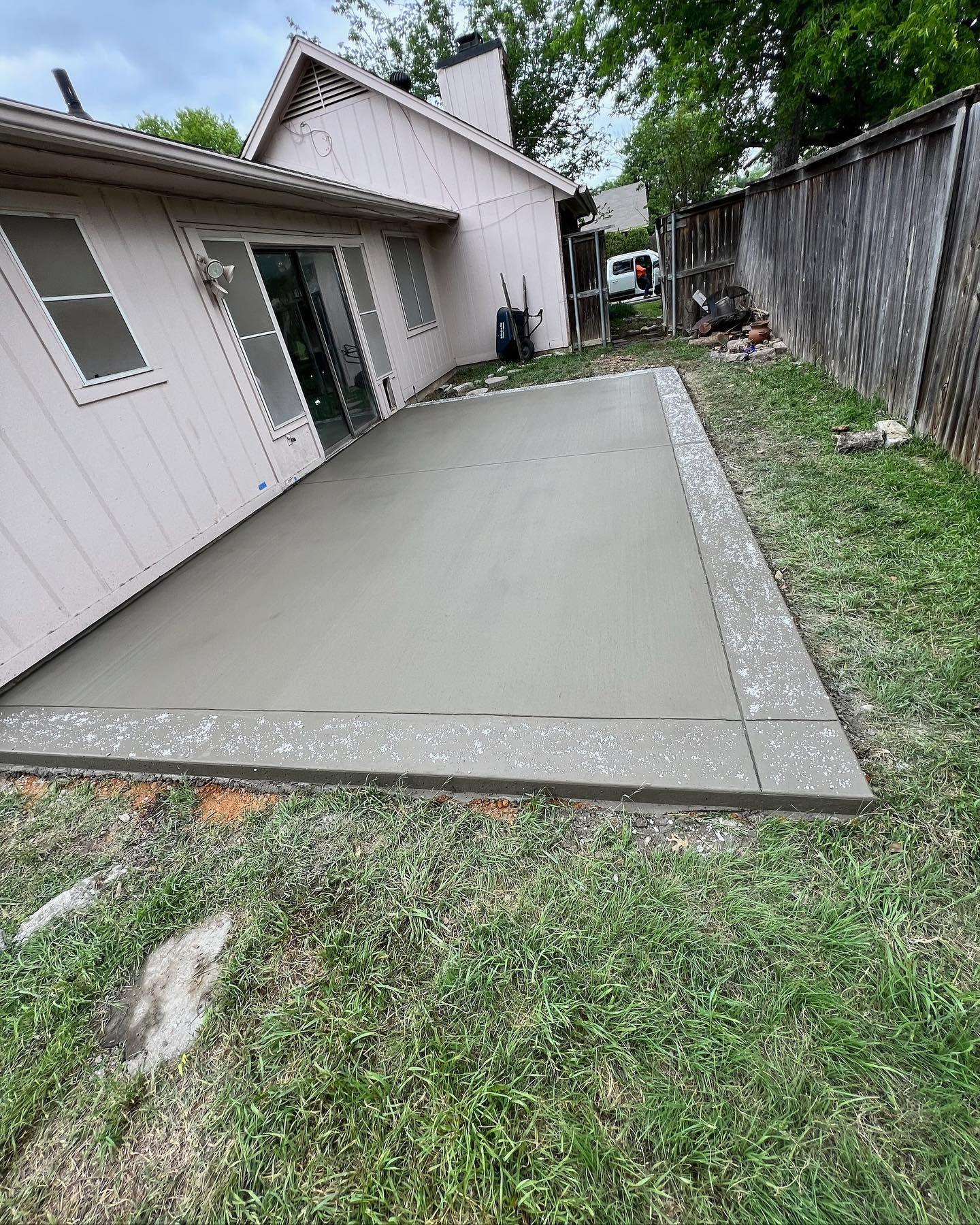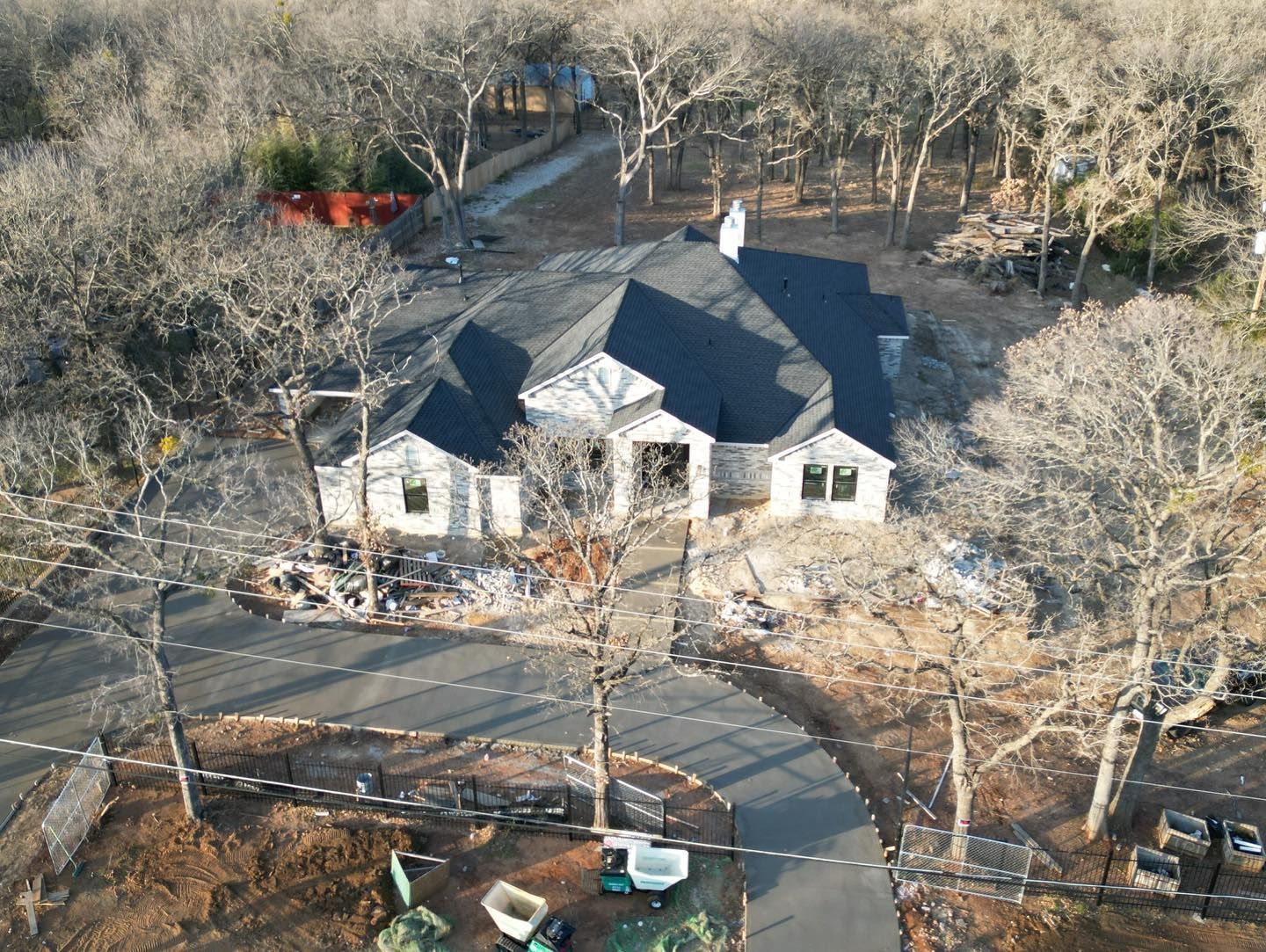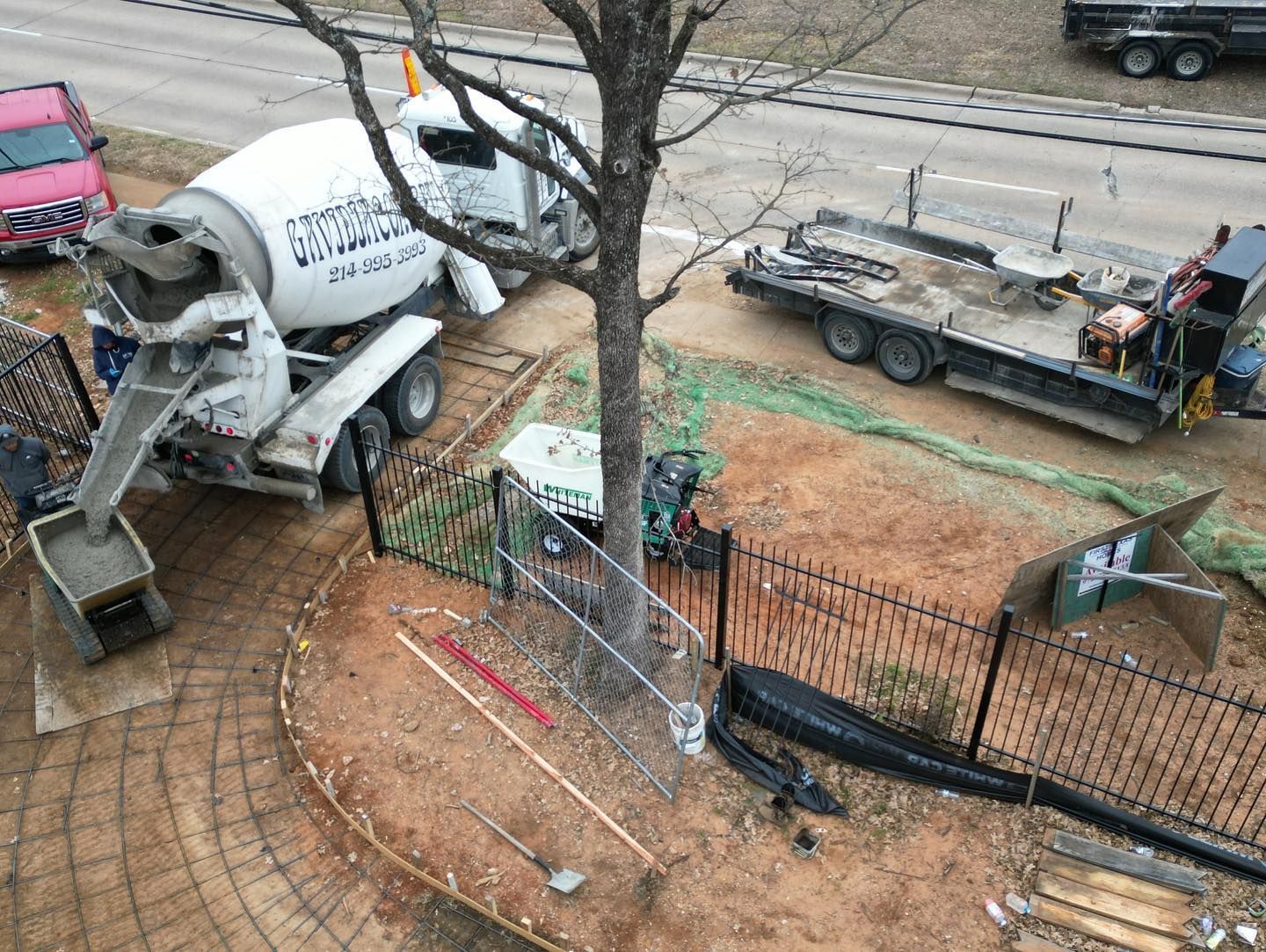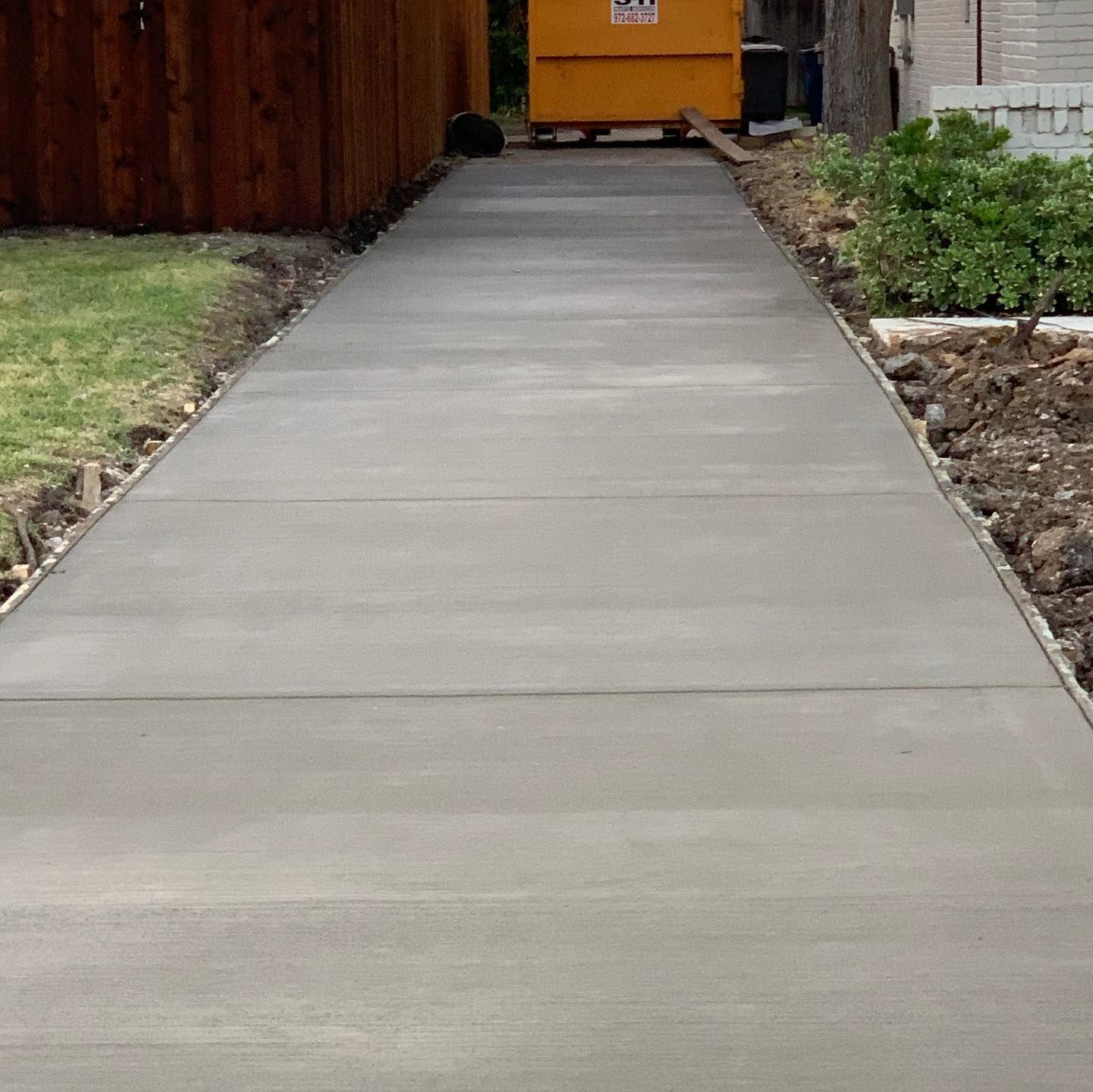Stamped vs. Stained Concrete: Which Adds More Curb Appeal?
When homeowners start exploring ways to improve their outdoor spaces, two decorative options quickly rise to the top: stamped concrete and stained concrete. Both can completely transform the look of your driveway, patio, or walkway — but which one adds more curb appeal?
At Galvez Construction, we’ve installed hundreds of custom concrete surfaces throughout the DFW Metroplex, and this is one of the questions we hear most often. Below, we’ll break down stamped concrete vs stained concrete, how they differ, and how to choose the right finish for your home’s style and budget.
Understanding the Difference Between Stamped and Stained Concrete
Let’s start with what sets the two apart. While they’re both considered decorative finishes, the techniques — and the results — are very different.
Stamped Concrete
Stamped concrete involves pressing textured patterns into freshly poured concrete before it fully hardens. These patterns can mimic natural materials like stone, brick, slate, or even wood. Once the texture is applied, color hardeners and sealers enhance depth and realism.
The result? A durable surface that combines the visual appeal of high-end materials with the strength and affordability of concrete.
Stained Concrete
Stained concrete, on the other hand, focuses on color rather than texture. The concrete surface is treated with either an acid-based or water-based stain that penetrates deeply into the material, creating rich, translucent tones.
Unlike paint or coatings that sit on top of the surface, stains become part of the concrete itself — offering a permanent, fade-resistant finish that adds visual warmth and depth.
Curb Appeal: Texture vs. Tone
When comparing stamped concrete vs stained concrete, it helps to think about what kind of curb appeal you’re trying to achieve.
The Case for Stamped Concrete
If you want bold texture and eye-catching dimension, stamped concrete is hard to beat. It’s ideal for homeowners who love the look of natural stone or brick but prefer a more affordable, low-maintenance option.
Best uses for stamped concrete include:
- Driveways and entryways
- Patios and pool decks
- Walkways and outdoor entertaining spaces
Stamped concrete immediately enhances your home’s outdoor design by creating a cohesive, polished look that complements landscaping, architecture, and exterior finishes.
The Case for Stained Concrete
If your goal is elegance through color and subtle variation, stained concrete might be your best choice with a wide range of concrete colors — from earthy browns and warm reds to sleek charcoals and soft greens — stained concrete offers artistic flexibility and a modern aesthetic.
Best uses for stained concrete include:
- Interior floors and garages
- Covered patios and porches
- Walkways or entry steps where smooth finishes are preferred
While stamped concrete adds texture, stained concrete focuses on visual tone and richness. Both options elevate curb appeal in different ways.
Durability and Maintenance: Which Lasts Longer?
Texas weather can be tough on outdoor surfaces. Between blazing heat, heavy rain, and occasional freezes, it’s important to choose a finish built for endurance.
Stamped Concrete Durability
Stamped concrete is poured as a single, reinforced slab — which means there are no joints for weeds to grow through or pavers to shift. When sealed properly, it resists moisture, fading, and cracking.
Maintenance tip: Reseal your stamped concrete every 2–3 years to maintain color vibrancy and surface protection.
Stained Concrete Durability
Stained concrete’s strength depends on the quality of the existing concrete. The stain itself doesn’t add protection but can be paired with a sealant for long-term resilience.
Maintenance tip: Sweep regularly, clean spills quickly, and reapply sealer as needed to protect the surface from UV and moisture damage.
In short, both are highly durable — but stamped concrete tends to offer more weather protection thanks to its added texture and sealer system.
Cost Considerations
When deciding between stamped concrete vs stained concrete, cost is usually a factor. While prices vary depending on project size and design complexity, here’s a general comparison:
- Stamped Concrete: Higher upfront cost due to pattern molds, color hardeners, and labor time — but often delivers a higher return on investment through visual impact and resale value.
- Stained Concrete: More affordable per square foot, especially when refinishing an existing slab. It’s a great choice for upgrading older concrete without a full replacement.
Homeowners often find that the extra investment in stamped concrete pays off through long-term curb appeal and durability, while stained concrete offers a budget-friendly way to beautify existing surfaces.
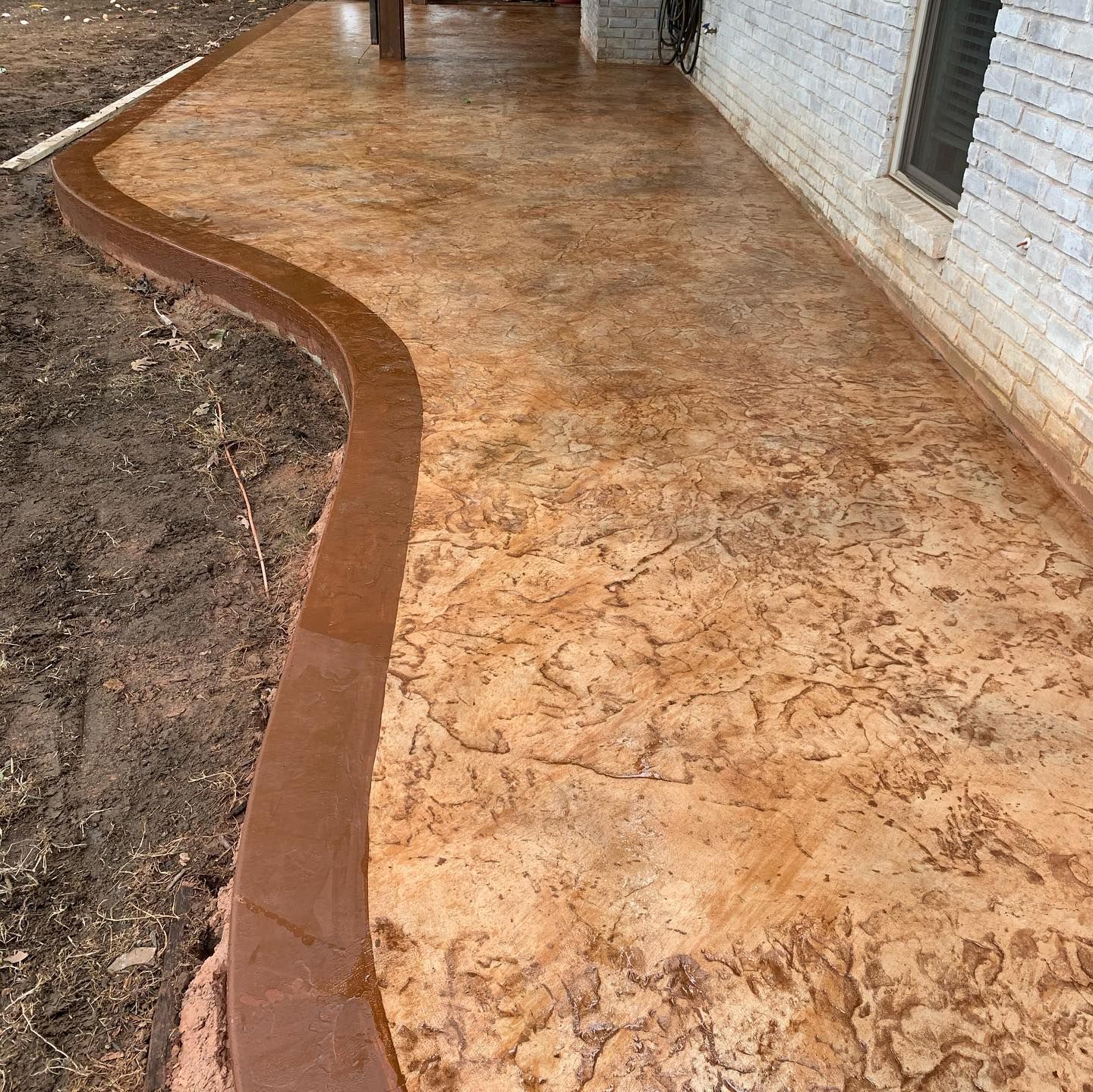
Design Versatility and Aesthetic Impact
Few materials can match concrete’s versatility — and both of these finishes show why it’s such a popular choice for Texas homes.
Stamped Concrete’s Decorative Finishes
From cobblestone and flagstone to herringbone brick and wood plank designs, stamped concrete can replicate virtually any surface texture. It’s perfect for homeowners who want a custom, high-end look without the maintenance of natural stone or pavers. You can also customize your decorative finishes with multiple colors and patterns, giving your patio or driveway a truly unique character.
Stained Concrete’s Artistic Expression
Stained concrete offers artistic depth through layers of translucent color. Acid stains create natural marbling effects, while water-based stains allow for bold, uniform color tones. This flexibility makes stained concrete an excellent option for blending indoor and outdoor living areas through matching concrete colors.
Which Adds More Curb Appeal?
So, when it comes down to stamped concrete vs stained concrete, which one actually boosts curb appeal more? The answer depends on your home’s architecture and personal style:
- Stamped concrete offers dramatic texture and a “wow factor” that immediately catches the eye from the street. It’s ideal for driveways, patios, and entryways.
- Stained concrete provides subtle elegance and artistic warmth, making it great for porches, walkways, and indoor-outdoor transitions.
If you’re planning to sell your home or simply want to elevate first impressions, stamped concrete usually delivers the most noticeable impact. But if you’re going for sleek, modern refinement, stained concrete could be the perfect fit.
Choosing the Right Finish for Your Home
At Galvez Construction, we help homeowners choose the finish that best fits their property’s style, budget, and usage needs. Here are a few guiding questions to help you decide:
- Do you prefer texture (stamped) or color (stained)?
- Is your project new construction or an update to existing concrete?
- How much traffic and sunlight will the surface get?
- Do you want to mimic natural stone, tile, or wood?
- How much ongoing maintenance are you willing to do?
Our team can walk you through all options — from color samples and pattern books to real project photos — so you can visualize the end result before we start pouring.
The Galvez Construction Advantage
When you choose Galvez Construction, you’re choosing expert craftsmanship, premium materials, and long-lasting results. Every project uses 3500 PSI concrete and 3/8” rebar, ensuring structural integrity that stands up to Texas weather.
We serve homeowners across Sanger, Little Elm, Frisco, McKinney, Plano, and the DFW Metroplex, delivering quality decorative finishes that make homes stand out for all the right reasons.
Whether you’re interested in stamped concrete vs stained concrete, our experienced team will help you pick the best option to enhance your home’s outdoor design — one that balances beauty, durability, and value.
Ready to Boost Your Home’s Curb Appeal?
Your driveway, patio, or walkway doesn’t just serve a function — it frames your entire property. Whether you prefer the dimensional texture of stamped concrete or the rich, customized color of stained concrete, both are smart, lasting investments.
Contact Galvez Construction today to schedule a free consultation. We’ll help you compare design options, choose your favorite concrete colors, and create a surface that adds beauty, strength, and value to your home for years to come.
Search Blog
Recent Post
